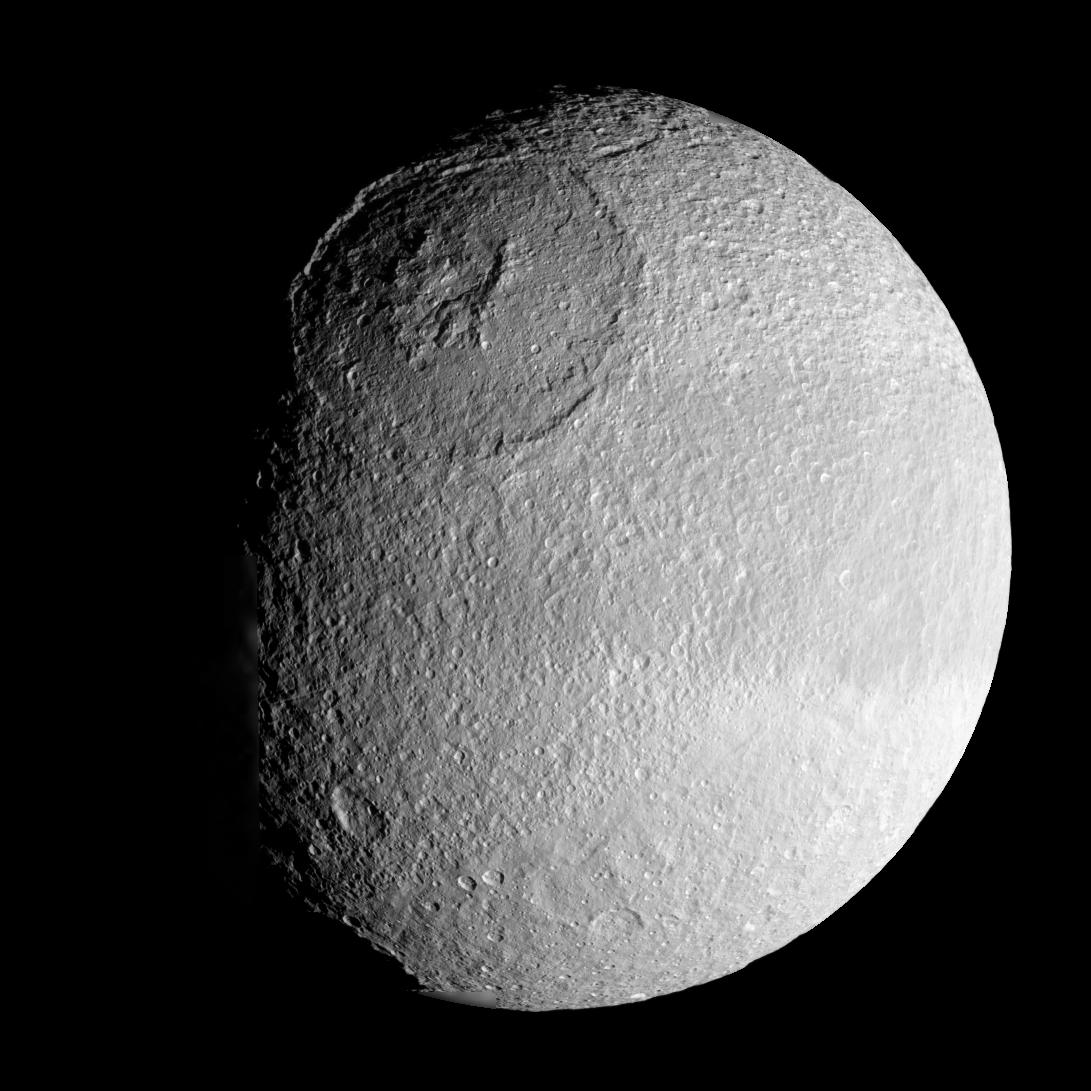In their recently published study, researchers from the Southwest Research Institute (SwRI) describe how certain craters on Saturn’s two moons could help determine the moons’ age and formation conditions. Sierra Ferguson (SwRI), the paper’s lead author, used data from NASA’s Cassini spacecraft to examine the elliptical craters of Saturn’s moons Tethys and Dione.
“Through our work, we are trying to find an answer to a broader question, which is the age of these moons. To answer that question, my colleagues and I mapped elliptical craters on the moon’s surface to determine their size, orientation, and position on the moon.” Ferguson said.
Circular craters are very common and can form under a myriad of impact conditions. However, elliptical craters are rare and consist of slow and not very deep impacts. They can be used to estimate the age of a celestial body, where the shape and direction of the crater indicate the trajectory of the affected object.
“If we determine the direction of the craters, we can get an idea of the dynamics of the impacted objects and the direction from which they hit the surface. Ferguson says. At first, the researcher did not expect to find a pattern in the direction of elliptical craters, but eventually noticed something in the case of craters located along the equator. Dione, one of Saturn’s minor moons.The vast majority of the elliptical craters here have an east-west orientation, while their location near the poles is random.
“Initially, we interpreted this pattern to mean that there could be two different types of influencing bodies.” – Tell. “One group was responsible for the formation of equatorial elliptical craters, while another less uniform group may represent the average shockwaves around Saturn.”
The researcher also mapped elliptical craters on Tethys, Saturn’s fifth-largest moon, and found that this size and frequency distribution of craters is unusual for bodies orbiting the Sun, but oddly consistent with estimates of craters that smashed into Neptune’s moon Triton. Corpses. Since these impacting bodies are thought to be Earth-centered, meaning they are pulled by the ice giant’s immense gravity, Ferguson’s findings highlight the importance of considering Earth-centered influences when determining the history of some of the Saturn system’s moons.
Researchers believe that the equatorial craters may have been formed by disks of debris orbiting the moons, or perhaps by a single disk that hit both moons.
“If we start from Triton, Tethys could be several billion years old. The result of estimating the age depends on how much debris is available to impact the surface and when. We will need more data to know for sure, but this research is already telling us a lot,” Ferguson said. We can develop an idea of what the conditions were for the formation of the moons. Was it a completely chaotic system where matter could hit these moons from all directions, or was it a clean and orderly system? “
The researchers hope to eventually be able to compare data from Saturn’s moons and those of another ice giant, Uranus.
Report results Art article It will appear in the September 1, 2022 issue of Earth and Planetary Science Letters.
source: science daily
Suspension












































